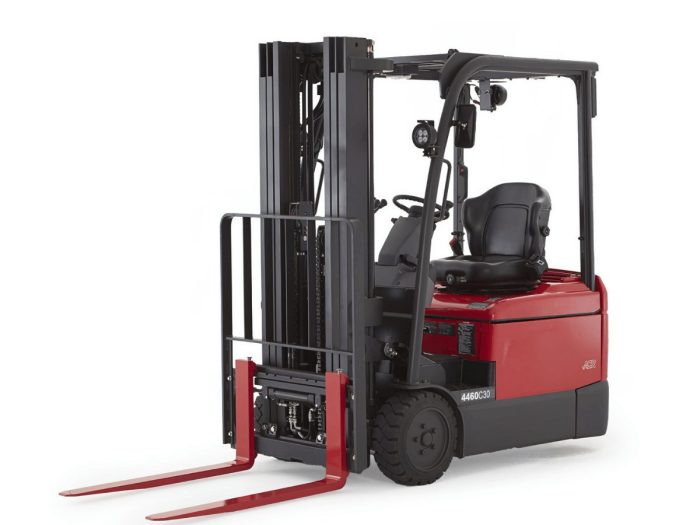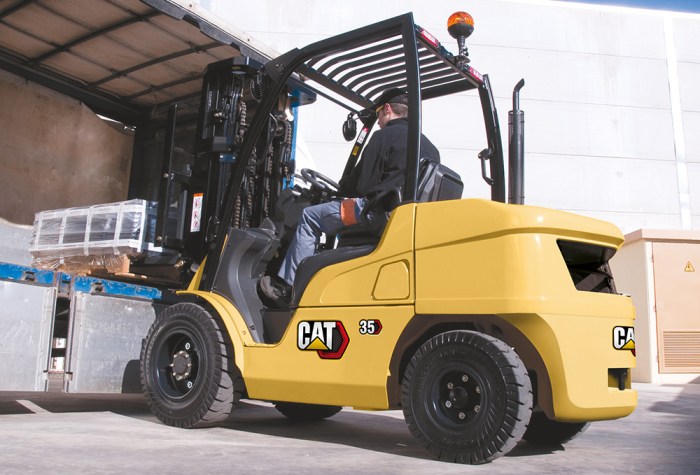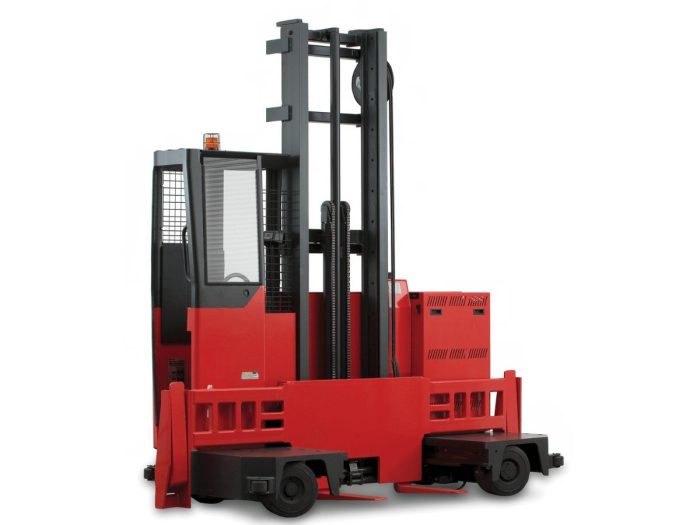You’re driving a sit-down counterbalance forklift, a powerful and versatile machine that can lift and transport heavy loads in a variety of industrial settings. In this comprehensive guide, we’ll delve into the safe operation, maintenance, and applications of sit-down counterbalance forklifts, empowering you to operate these machines with confidence and efficiency.
Whether you’re a seasoned operator or new to the world of forklifts, this guide will provide you with the knowledge and skills you need to succeed. So buckle up, grab the controls, and let’s explore the fascinating world of sit-down counterbalance forklifts.
Forklift Safety Protocols
Adhering to safety guidelines is paramount when operating a sit-down counterbalance forklift to prevent accidents and injuries. Before operating the forklift, conduct a thorough inspection of the equipment, including tires, brakes, hydraulics, and electrical systems. Wear appropriate personal protective equipment (PPE), such as a hard hat, safety glasses, and high-visibility vest.
Plan the travel route carefully, considering potential obstacles and traffic flow. During operation, maintain a safe speed, avoid sudden stops or turns, and use the horn to signal your presence. Be aware of your surroundings and potential hazards, such as pedestrians, other vehicles, and overhead obstructions.
After operating the forklift, park it in a designated area and engage the parking brake.
Consequences of Neglecting Safety Measures
- Increased risk of accidents and injuries
- Damage to equipment or property
- Legal liability and financial penalties
- Reduced productivity and efficiency
Forklift Operation Techniques: You’re Driving A Sit-down Counterbalance Forklift
Proper Maneuvering
Safely maneuvering a sit-down counterbalance forklift requires precision and control. In narrow aisles, operate the forklift slowly and carefully, paying attention to the clearance on both sides. When encountering uneven surfaces, reduce speed and adjust the forks accordingly to maintain stability.
Avoid sharp turns or sudden movements, especially when carrying a load.
Load Handling
Lifting, transporting, and stacking loads safely are essential forklift operations. Before lifting a load, ensure it is securely attached and within the forklift’s weight capacity. Center the load on the forks and tilt the mast back slightly to prevent the load from shifting.
Transport loads at a low height, maintaining a clear view of the surroundings. When stacking loads, place them evenly and securely to avoid collapse or damage.
Forklift Maintenance and Inspection
Regular maintenance and inspection are crucial for the safe and efficient operation of sit-down counterbalance forklifts. Before each use, inspect key components, including tires for wear or damage, brakes for proper function, hydraulics for leaks or contamination, and electrical systems for loose connections or damage.
Perform basic maintenance tasks, such as fluid checks, battery charging, and cleaning. Keep a maintenance log to record inspections and repairs.
Importance of Maintenance
- Improved safety and reliability
- Reduced downtime and repair costs
- Extended lifespan of the forklift
- Enhanced productivity and efficiency
Forklift Applications and Limitations
Common Applications, You’re driving a sit-down counterbalance forklift
Sit-down counterbalance forklifts are widely used in various industries, including manufacturing, warehousing, and distribution. They are ideal for handling and transporting heavy loads in indoor and outdoor environments.
Advantages
- High lifting capacity and stability
- Improved operator comfort and visibility
- Suitable for a wide range of load sizes and shapes
- Versatile for both indoor and outdoor use
Disadvantages
- Limited maneuverability in narrow aisles
- Height restrictions for certain applications
- Higher cost compared to other forklift types
Forklift Training and Certification

Proper training and certification are essential for forklift operators to ensure safety and competence. Training programs cover theoretical knowledge, practical skills, and safety regulations. Operators must demonstrate proficiency in operating the forklift, handling loads, and performing basic maintenance tasks. Certification is typically issued by accredited organizations and requires periodic renewal to maintain validity.
Benefits of Training
- Reduced accidents and injuries
- Improved productivity and efficiency
- Enhanced operator confidence and skills
- Compliance with safety regulations
Forklift Ergonomics and Operator Comfort

Operating a sit-down counterbalance forklift for extended periods can lead to musculoskeletal discomfort or injuries. Proper ergonomic considerations are essential to reduce fatigue and promote operator well-being. Adjust the seat, steering wheel, and controls to fit the operator’s body size and posture.
Maintain proper posture, avoiding slouching or twisting. Take regular breaks to stretch and move around to prevent muscle strain.
Tips for Operator Comfort
- Use a supportive seat with adjustable lumbar support
- Position the steering wheel and controls within easy reach
- Adjust the backrest to provide proper back support
- Wear comfortable, non-slip shoes
Forklift Technology and Advancements

Technological advancements have significantly improved the safety, efficiency, and productivity of sit-down counterbalance forklifts. Advanced features include load-sensing hydraulics for precise load handling, telematics systems for remote monitoring and data analysis, and ergonomic designs for operator comfort. Future developments may include autonomous operation, enhanced safety systems, and integration with warehouse management systems.
Benefits of Technological Advancements
- Improved safety and reduced accidents
- Increased productivity and efficiency
- Reduced operating costs
- Enhanced operator comfort and well-being
FAQ Summary
What are the key safety precautions to consider before operating a sit-down counterbalance forklift?
Before operating a sit-down counterbalance forklift, it’s crucial to conduct a thorough pre-operation inspection, ensuring that all controls are functioning properly, there are no visible leaks or damage, and the load capacity is suitable for the intended task.
How do I safely maneuver a sit-down counterbalance forklift in narrow aisles?
When maneuvering a sit-down counterbalance forklift in narrow aisles, proceed slowly and carefully, maintaining a safe distance from obstacles and other equipment. Use the rear-view mirror and side mirrors to enhance visibility, and be aware of any potential blind spots.
What are the recommended ergonomic considerations for operating a sit-down counterbalance forklift?
To ensure operator comfort and minimize fatigue, adjust the forklift’s seat and controls to fit your body size and posture. Maintain proper posture throughout operation, avoiding awkward positions that could lead to musculoskeletal injuries.